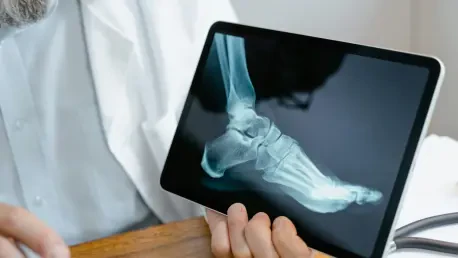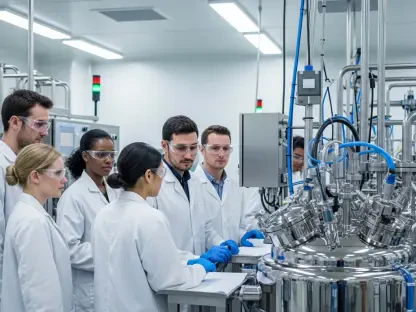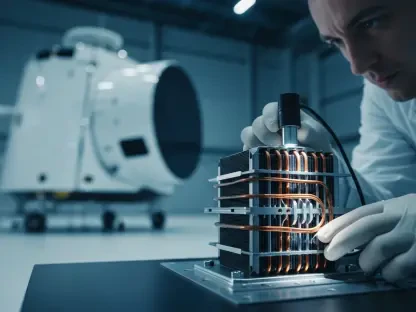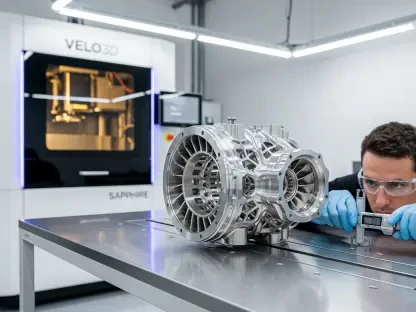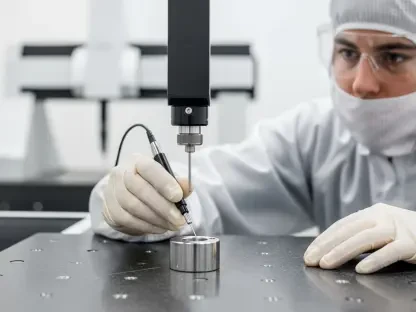Kwame Zaire, a manufacturing expert with a keen interest in electronics and equipment, talks about the groundbreaking innovations in Stryker’s Incompass Total Ankle System. This revolutionary system has just received FDA clearance and integrates advanced technologies aimed at enhancing patient outcomes. Kwame offers insights into how predictive maintenance, quality, and safety are shaping the future of such medical devices.
Can you explain what the Incompass Total Ankle System is and who it is intended for?
The Incompass Total Ankle System is an innovative medical implant designed for individuals with severely damaged ankle joints due to rheumatoid, post-traumatic, or degenerative arthritis. It offers a comprehensive solution for total ankle replacement, focusing on patients requiring enhanced mobility and reduced pain.
How does the Incompass platform integrate the technologies of the Inbone and Infinity systems?
Incompass combines the technologies and strengths of the Inbone and Infinity systems to create a single comprehensive platform. This integration allows it to offer a more streamlined and effective approach to ankle replacement, enhancing both usability and patient outcomes by leveraging the best of both worlds.
What is the Adaptis Boney Ingrowth Technology, and how does it benefit the Incompass system?
Adaptis Boney Ingrowth Technology is a key feature of the Incompass system, utilizing metal Additive Manufacturing to create a porous scaffold. This scaffold supports bone ingrowth, offering long-term fixation and stability for the ankle implant, which significantly enhances patient recovery and the overall longevity of the replacement.
In what ways does metal Additive Manufacturing play a role in the Incompass Total Ankle System?
Metal Additive Manufacturing is crucial for creating complex structures like the Adaptis scaffold. This technology allows for precise and customizable implants that enhance bone integration and overall functionality, contributing to the system’s success in addressing various patient-specific needs.
What are the specific challenges in total ankle replacement that the Incompass system addresses?
The Incompass system tackles significant challenges such as intraoperative adaptability and procedural efficiency. It addresses these by providing a range of implant options and improved instrumentation, which helps in accommodating the diverse anatomical needs of patients while simplifying the surgical process.
Can you elaborate on how clinical data from 85,000 CT scans and 100,000 clinical cases have informed the development of the Incompass system?
Extensive clinical data analyses have allowed us to refine the Incompass system continuously. Insights from over 85,000 CT scans and 100,000 clinical cases have led to more personalized implants and instrumentation, ensuring that the system can cater to a wide array of anatomical variations and surgical preferences.
How does the system offer a range of implant and instrumentation options for patient-specific care?
The Incompass system has been developed to provide a continuum of implant and instrumentation choices that accommodate the specific requirements of each patient. This flexibility ensures that surgeons can select the most appropriate tools and implants, leading to more personalized and effective care.
What is the Stryker Orthopaedic Modeling & Analytics (SOMA) platform, and how is it used in the Incompass system?
The SOMA platform is a powerful tool that we use in the development and refinement of the Incompass system. By leveraging detailed orthopedic modeling and analytics, SOMA helps create implants that are better suited to individual anatomical needs, enabling tailored surgical solutions.
How does the Prophecy Surgical Planning System contribute to the Incompass platform?
The Prophecy Surgical Planning System complements the Incompass platform by providing precise preoperative planning. By integrating arthritic ankle scans, it allows for better surgical preparation, contributing to the high success rates and patient satisfaction associated with the system.
What are the key enhancements in the Incompass system regarding the alignment system and implant holders?
Enhancements in the alignment system and implant holders focus on achieving greater control and precision during surgery. The redesigned alignment tools allow for adjustments across multiple planes, while updated implant holders improve the handling and positioning of instruments, ensuring a more efficient surgical process.
Can you describe the refined instrumentation changes in the system that help reduce surgical steps and setup time?
Refined instrumentation within the Incompass system has been strategically developed to minimize the number of steps in surgical procedures. By simplifying the tools and setup required, these changes significantly reduce the time and complexity involved, facilitating a more streamlined surgical workflow.
How does the Incompass system support greater surgical flexibility and streamlined workflow?
By offering modifiable implant options and intuitive instrumentation, the Incompass system enhances surgical flexibility. This adaptability not only facilitates surgeon preference but also reduces the overall complexity and time needed for procedures, leading to better patient outcomes and more efficient surgeries.
What does the FDA 510(k) clearance mean for the Incompass Total Ankle System?
Receiving FDA 510(k) clearance is a significant milestone, affirming that the Incompass Total Ankle System meets all safety and efficacy standards. It validates our commitment to providing a superior ankle replacement solution, opening pathways for wider clinical use and acceptance in the field.
How does Stryker ensure that the Incompass system empowers surgeons to deliver more personalized care?
By integrating advanced technologies and comprehensive data analysis, Stryker ensures that the Incompass system offers unparalleled personalization. The variety in implant options, coupled with precise planning and instrumentation, empowers surgeons to tailor procedures to meet the specific needs of each patient.
Could you share any early feedback or results from surgeons who have used the Incompass Total Ankle System?
Early feedback from surgeons has been overwhelmingly positive. Many have appreciated the system’s adaptability and the intuitive nature of its instrumentation, which have contributed to improved surgical outcomes and enhanced patient satisfaction. The personalized care capabilities have also been a significant highlight.
What is your forecast for the future of ankle replacement technology?
As we move forward, I believe the focus will increasingly be on enhancing personalization and efficiency through data-driven insights and continued innovation in manufacturing technologies. The trend toward integrating predictive analytics and tailored solutions will undoubtedly set new standards in ankle replacement care.
